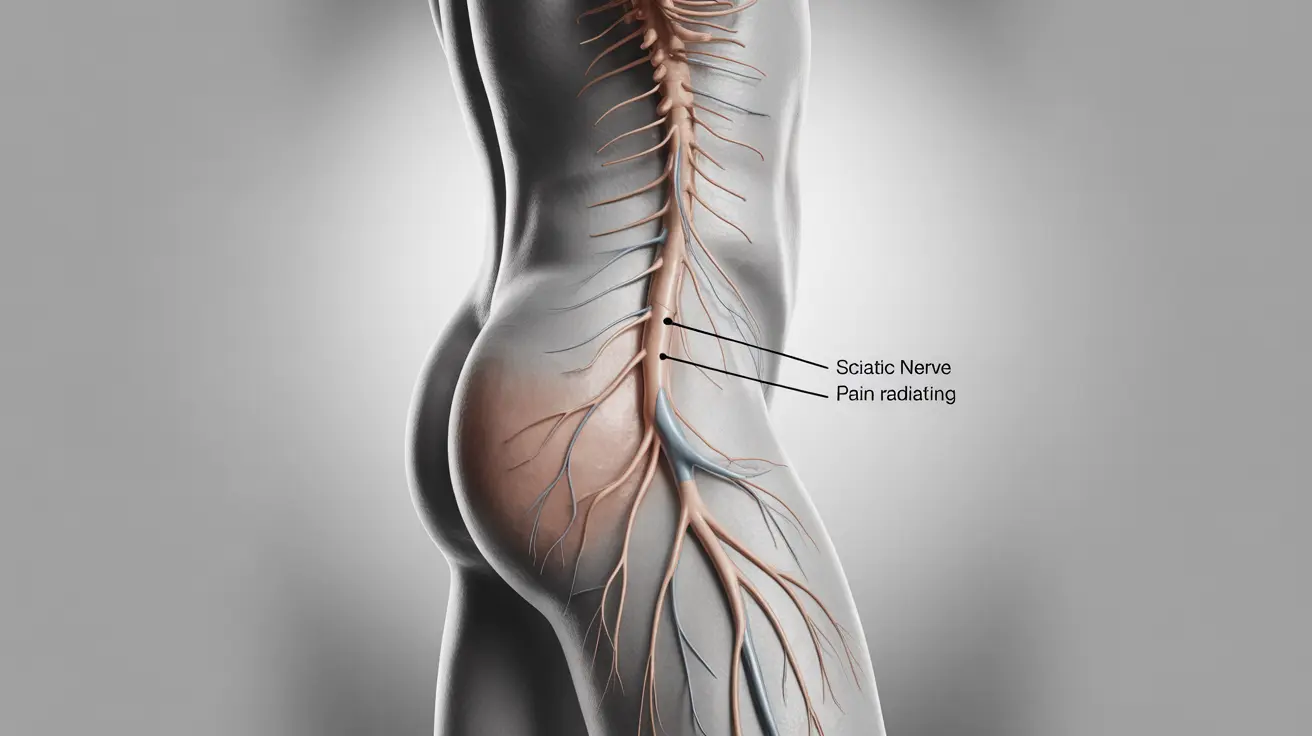Lower left back pain can significantly impact your daily activities and quality of life. While various conditions can cause discomfort in this region, sciatic nerve involvement often presents with distinct characteristics that set it apart from general back pain. Understanding these differences is crucial for proper diagnosis and treatment.
This comprehensive guide will explore the causes, symptoms, and treatment options for pain in the lower left back, with a particular focus on sciatica-related discomfort. We'll also discuss when to seek medical attention and provide practical tips for managing and preventing future episodes.
Identifying Lower Left Back Pain Characteristics
Pain in the lower left back can manifest in several ways, depending on its underlying cause. When sciatica is involved, the pain typically:
- Radiates from the lower back down through the left buttock and leg
- Feels sharp, burning, or electric-shock-like
- Worsens with prolonged sitting or standing
- May be accompanied by numbness or tingling
- Can range from mild discomfort to severe, debilitating pain
Understanding these distinctive characteristics can help differentiate between general back pain and sciatic nerve involvement, leading to more effective treatment approaches.
Common Causes of Lower Left Back Pain
Several conditions can trigger pain in the lower left back region:
Nerve-Related Causes
- Herniated or bulging discs
- Spinal stenosis
- Piriformis syndrome
- Degenerative disc disease
Muscular and Structural Causes
- Muscle strain or sprain
- Poor posture
- Physical overexertion
- Sports injuries
Other Contributing Factors
Certain activities and conditions can exacerbate lower left back pain:
- Prolonged sitting or standing
- Incorrect lifting techniques
- Obesity
- Pregnancy
- Stress and anxiety
Treatment Options and Pain Management
Managing lower left back pain often requires a multi-faceted approach:
Conservative Treatment Methods
- Over-the-counter pain medications (NSAIDs)
- Ice/heat therapy
- Gentle stretching exercises
- Physical therapy
- Proper posture maintenance
Professional Interventions
When conservative treatments aren't sufficient, healthcare providers may recommend:
- Prescription medications
- Targeted physical therapy
- Epidural steroid injections
- Manual therapy or chiropractic care
- In severe cases, surgical intervention
Prevention and Lifestyle Modifications
Preventing recurring episodes of lower left back pain involves making several lifestyle adjustments:
- Maintaining good posture
- Regular exercise and stretching
- Proper lifting techniques
- Weight management
- Ergonomic workplace setup
- Stress management techniques
When to Seek Medical Attention
While many cases of lower left back pain can be managed at home, certain symptoms warrant immediate medical attention:
- Severe, persistent pain that doesn't improve with rest
- Numbness or weakness in the legs
- Loss of bladder or bowel control
- Unexplained weight loss
- Fever accompanying back pain
Frequently Asked Questions
What does sciatica pain in the lower left back feel like, and how do I know if it's sciatica and not just back pain?
Sciatica pain typically feels sharp, burning, or electric-shock-like, radiating from the lower back through the left buttock and down the leg. Unlike general back pain, sciatica often includes numbness, tingling, or weakness along the affected nerve path. The pain usually worsens with prolonged sitting and may be more intense when coughing or sneezing.
What causes pain in the lower left back due to sciatica, and are there specific activities or conditions that make it worse?
Sciatica in the lower left back is commonly caused by a herniated disc, spinal stenosis, or piriformis syndrome. Activities that can worsen the condition include prolonged sitting, poor posture, sudden twisting movements, and heavy lifting. Obesity, pregnancy, and lack of regular exercise can also contribute to increased pain.
What are the best treatment options for sciatica that starts in the lower left back, and do over-the-counter medications help?
Over-the-counter NSAIDs can help reduce pain and inflammation. Other effective treatments include physical therapy, gentle stretching exercises, ice/heat therapy, and maintaining proper posture. For severe cases, healthcare providers may recommend prescription medications, epidural injections, or in rare cases, surgery.
When should I seek medical attention for sciatica pain in my lower left back, and what are the warning signs of serious nerve damage?
Seek immediate medical attention if you experience severe persistent pain, progressive leg weakness, loss of bladder or bowel control, or numbness in the groin area. These symptoms could indicate serious nerve damage requiring urgent evaluation and treatment.
Are there exercises or lifestyle changes I can make to relieve sciatica pain in my lower left back and prevent it from coming back?
Regular stretching exercises, particularly those targeting the piriformis muscle and hamstrings, can help relieve and prevent sciatica pain. Maintaining good posture, staying active, maintaining a healthy weight, and using proper lifting techniques are essential lifestyle modifications. Core-strengthening exercises can also help prevent recurrence.




